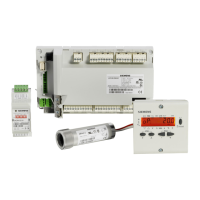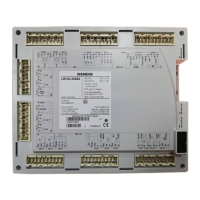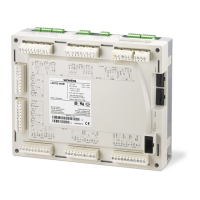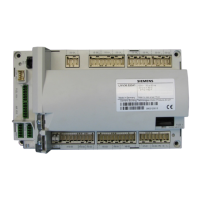Technical Instructions LMV Series
Document No. LV3-1000
Section 5 Page 28 SCC Inc.
Additional Tips for Burners with VSD Control
• Most of the time, speed faults that are seen on the LMV3 are caused by the VFD not being able to
decelerate the blower quickly enough when the blower is being ramped down. If fast ramp times
are not critical for the application, ramp times can be increased and this should correct the issue. If
fast ramp times are necessary, a braking resistor or other means of braking may be required to
achieve the fast ramp down times.
• The LMV3 in combination with the VSD can be tested to check for proper operation while the LMV3
is in standby, phase 12. After the VSD is successfully standardized, the home position of the VSD can
be adjusted with parameter 503 or 506, index 00. The actual speed in RPM can be read back on
parameter 935. If different % VSD speeds are set (503 or 506) and plotted vs. the actual speed
(935), the linearity of the VSD speed response can be assessed.
• The absolute speed as read in real time by the LMV3 can be viewed at any point during operation
using parameter 935. Many other parameters that are useful for troubleshooting are also contained
in the 900-level parameters.
• The ACS410 PC software has a trending package that is very useful when diagnosing VSD speed
control issues. In particular, the commanded speed and the actual speed can be plotted against one
another real time, and can be accurately reviewed to see where the largest deviations occur.
• The combustion air pressure switch should be set by taking the VSD to 10% below the lowest
anticipated low fire speed (if low fire is 50%, take the VSD to 40%) and setting the switch to open at
that point. This should maximize the safety potential of the combustion air pressure switch and
minimize nuisance air pressure trips. This can be done in standby by setting the home position of
the VSD to 10% lower than low fire and adjusting the switch to trip at this point.
• In most applications with an air damper, there is little reason to decrease blower speed below about
50% VSD (30 Hz for VFD). Power consumption decreases by the cube of the RPM even without the
additional restriction of an air damper. Referencing information from the "Centrifugal Blower
Fundamentals" section on the previous pages, decreasing the speed of a 25 HP (18.62 kW) motor
from 3600 RPM (60 Hz) to 1800 RPM (30 Hz) will cause the power consumption to be reduced from
18.62 kW down to 2.32 kW, an electrical savings of over 800%.
• A VSD alone without an air damper or sliding head offers limited accuracy and repeatability for the
airflow at higher burner turndowns. For most boiler burners, modulating the VSD alone without an
air damper is okay for turndowns of 4-to-1 or less. Using only a VSD for airflow regulation at higher
turndowns may lead to airflow repeatability issues.

